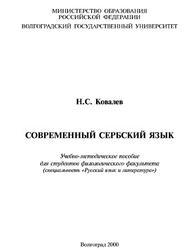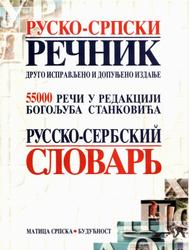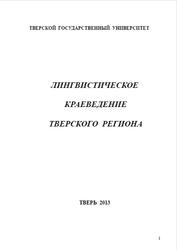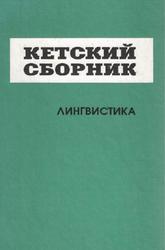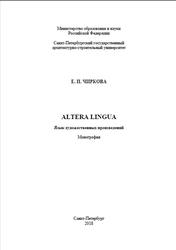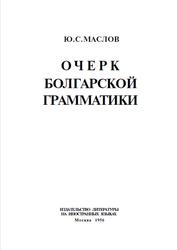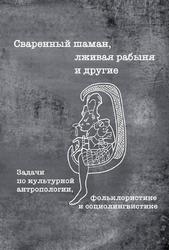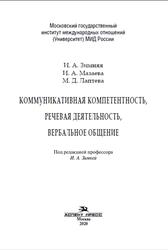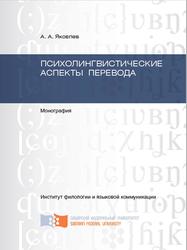Serbian: An Essential Grammar is an up to date and practical reference guide to the most important aspects of Serbian as used by contemporary native speakers of the language. This book presents an accessible description of the language, focusing on real, contemporary patterns of use. The Grammar aims to serve as a reference source for the learner and user of Serbian irrespective of level, by setting out the complexities of the language in short, readable sections.
It is ideal for independent study or for students in schools, colleges, universities and all types of adult classes.

Cultural, literary and linguistic background.
Serbian belongs to the Slavonic group of languages, which, along with the Romance and Germanic languages, is one of the three largest groups of the Indo-European family of languages.
The Slavonic group of languages includes Polish, Czech and Slovak (belonging to the western group of Slavonic languages), Ukrainian, Belarus and Russian (belonging to the eastern group of Slavonic languages) and Slovenian, Serbian, Croatian, Bosnian, Bulgarian and Macedonian (belonging to the southern group of Slavonic languages).
In the sixth and seventh centuries, various Slavonic tribes, some of which were to become the Serbian nation, migrated from the north -Russia, Byelorussia and the Ukraine, where they shared the land with the eastern Slavs - and travelled to the Balkan peninsula and the region of Pannonia. At the time Bulgaria and the Byzantine Empire both wanted to occupy this region. The Slavs, themselves pagans, were also caught between the Western, Catholic, and the Eastern, Orthodox religions. In the ninth century, Serbian rulers, struggling for power, converted to Christianity and were baptised by priests from the Byzantine Empire. Different tribes joined together under the common Christian religion.
Contents.
Preface.
Acknowledgements.
Part I The language and its dialects.
Chapter 1 Cultural, literary and linguistic background.
Chapter 2 Dialects.
Part II Alphabet, pronunciation and stress.
Chapter 3 Alphabet.
Chapter 4 Pronunciation.
4.1. Consonants.
4.1.1. Voiced and unvoiced consonants.
4.1.2. Soft and hard consonants.
4.1.3. Consonantal assimilations.
4.1.4. Consonantal contractions.
4.1.5. Fleeting a.
4.1.6. Change of л/l to о.
4.1.7. J changes.
4.1.8. Effects of e/e and и/i on к/к, r/g and x/h.
4.2. Vowels.
4.2.1. Length and stress.
4.2.2. Vowel mutations.
Chapter 5 Stress.
5.1. Word stress and tone.
5.2. Shift of stress.
5.3. Sentence stress.
Part III Parts of speech.
Chapter 6 Verbs.
6.1. Infinitives - classification.
6.2. Infinitive and present tense stems.
6.2.1. Type I conjugation.
6.2.2. Type II conjugation.
6.2.3. Type III conjugation.
6.3. Types of verbs and aspects.
6.3.1. Transitive and intransitive verbs.
6.3.2. Imperfective and perfective verbs.
6.4. Present tense.
6.4.1. Formation of the present tense and its use.
6.4.2. The negative present tense.
6.4.3. The interrogative present.
6.4.4. The negative interrogative present tense.
6.5. Past tense (perfect tense).
6.5.1. Formation of the perfect tense and its use.
6.5.2. The negative perfect tense.
6.5.3. The interrogative perfect tense.
6.5.4. The negative interrogative perfect tense.
6.6. Future tense.
6.6.1. Formation of the future tense and its use.
6.6.2. The negative future.
6.6.3. The interrogative future.
6.6.4. The negative interrogative future.
6.7. Aorist tense.
6.7.1. Formation of the aorist tense and its use.
6.7.2. The negative aorist.
6.7.3. The interrogative aorist.
6.7.4. The negative interrogative aorist.
6.8. Future II.
6.8.1. Uses of future II.
6.8.2. Formation of the future II.
6.9. The conditional.
6.9.1. Uses of the conditional.
6.9.2. Formation of the conditional.
6.10. Imperative.
6.10.1. Use of the imperative.
6.10.2. Formation of the imperative.
6.11. Reflexive verbs.
6.12. Impersonal verbs.
6.13. Auxiliary verbs.
6.14. Formation of the interrogative.
6.15. Formation of the negative.
6.16. Present perfective aspect of бити/biti.
6.17. Иhи/ici and its derivatives.
6.18. Modal verbs.
Chapter 7 Nouns.
7.1. Types of nouns.
7.2. Gender of nouns.
7.3. Cases of nouns.
7.3.1. Nominative case.
7.3.2. Genitive case.
7.3.3. Dative case.
7.3.4. Accusative case.
7.3.5. Vocative case.
7.3.6. Instrumental case.
7.3.7. Locative case.
7.4. Declension of nouns.
7.4.1. Masculine and neuter nouns.
7.4.2. Feminine and masculine nouns ending in -a and the noun мати/mati.
7.4.3. Feminine nouns ending in a consonant, in -o, -ocт/ost or -ад/ad, and the noun кhи/kci.
7.4.4. Declension of irregular nouns.
Chapter 8 Pronouns.
8.1. Personal pronouns.
8.1.1. Declension of personal pronouns.
8.1.2. Stressed personal pronouns.
8.1.3. Unstressed personal pronouns.
8.1.4. Order of unstressed personal pronouns.
8.2. Reflexive pronouns.
8.3. Possessive pronouns.
8.4. Demonstrative pronouns.
8.5. Relative pronouns.
8.6. Interrogative pronouns.
8.7. Universal pronouns.
Chapter 9 Adjectives.
9.1. Classification of adjectives.
9.2. Indefinite adjectives.
9.3. Definite adjectives.
9.4. Possessive adjectives.
9.5. Adjectival declension.
9.6. Comparative adjectives.
9.7. Superlative adjectives.
9.8. Verbal adjectives.
9.8.1. The active past participle.
9.8.2. Formation of the active past participle.
9.8.3. The passive participle.
9.8.4. Formation of the passive past participle.
Chapter 10 Adverbs.
10.1. Substantival (nominal) adverbs.
10.2. Adjectival adverbs.
10.3. Pronominal adverbs.
10.4. Verbal adverbs.
10.4.1. The present verbal adverb.
10.4.2. The past verbal adverb.
Chapter 11 Prepositions.
11.1. Simple prepositions.
11.2. Compound prepositions.
11.3. Accentuation.
11.4. Prepositions through the cases.
Chapter 12 Conjunctions.
12.1. Coordinating conjunctions.
12.2. Subordinating conjunctions.
12.3. Differences in usages of што/sto and кojи/koji.
Chapter 13 Enclitics.
13.1. Order and importance of enclitics.
Chapter 14 Numerals.
14.1. Cardinal numbers and their declension.
14.1.1. Number one.
14.1.2. Numerals two, three, four and the numeral ‘both’.
14.1.3. Numerals five, six, seven and onwards.
14.2. Ordinal numbers and their declension.
14.3. Fractions and decimal numbers.
14.4. Collective numerals.
14.5. Number nouns.
14.6. Multiplicatives.
14.7. Approximatives.
14.8. Distributives.
14.9. Frequentatives.
14.10. Weights and measures.
14.11. Age.
14.12. Days, months and dates.
14.13. Time.
14.13.1. Telling the time.
14.13.2. Time-related words and expressions.
Chapter 15 Quantifiers.
15.1. Types of quantifiers.
15.1.1. Countable quantifiers.
15.1.2. Uncountable quantifiers.
15.1.3. Countable and uncountable quantifiers.
Chapter 16 Determiners.
16.1. Possessive determiners.
16.2. Demonstrative determiners.
16.3. Indefinite determiners.
16.4. Interrogative determiners.
16.5. Negative determiners.
Chapter 17 Particles, conjunctions and exclamations.
Part IV Sentence elements and structure.
Chapter 18 Sentences.
18.1. Elements of a sentence.
18.2. Types of clauses.
Chapter 19 Sentence structure.
19.1. Word order.
19.2. Punctuation.
19.3. Simple sentences.
19.4. Complex sentences.
Chapter 20 Word formation.
20.1. Prefixes.
20.2. Suffixes.
20.2.1. Nouns.
20.2.2. Adjectives.
Bibliography.
Index.
Бесплатно скачать электронную книгу в удобном формате, смотреть и читать:
Скачать книгу Serbian, An Essential Grammar, Hammond L., 2005 - fileskachat.com, быстрое и бесплатное скачивание.
Скачать pdf
Ниже можно купить эту книгу, если она есть в продаже, и похожие книги по лучшей цене со скидкой с доставкой по всей России.Купить книги
Скачать - pdf - Яндекс.Диск.
Дата публикации:
Хештеги: #учебник по сербскому языку :: #сербский язык :: #Hammond
Смотрите также учебники, книги и учебные материалы:
Следующие учебники и книги:
Предыдущие статьи:


